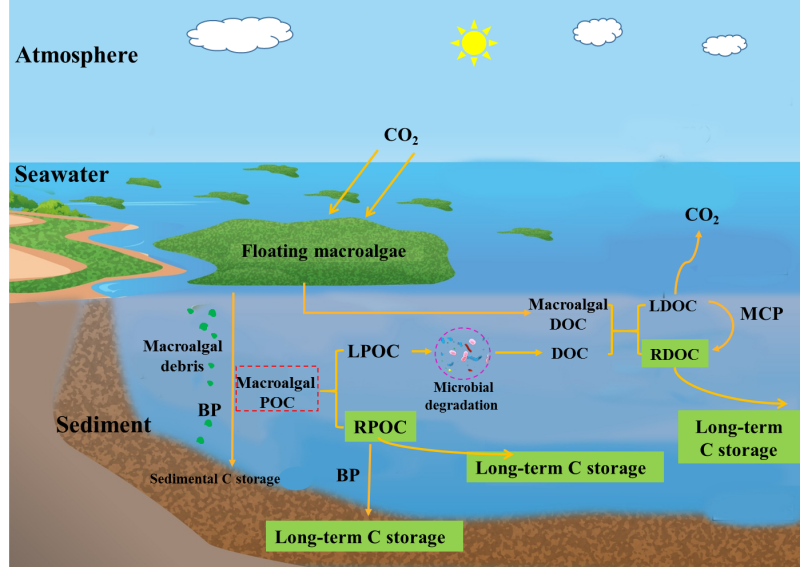Macroalgae are the most productive plants in coastal ecosystems. They have attracted worldwide interest due to their ability to sequester carbon. The growth of macroalgae can produce significant amounts of particulate organic carbon (POC), but it is unclear how these POC are metabolized and how they affect carbon sequestration.
Researchers from the Qingdao Institute of Bioenergy and Bioprocess Technology of the Chinese Academy of Sciences have revealed the fate of POC released by macroalgae and their effect on carbon sequestration.
Their results were published in Environmental Science & Technology.
In the South Yellow Sea, China, a study of the macroalgal bloom of Ulva prolifera was conducted, which revealed a significant increase in the concentration of POC in the surface seawater during the bloom.
Subsequently, a laboratory simulation experiment determined that 77.6% of the POCs were bio-labile, while the remaining 22.4% were bio-recalcitrant. Microorganisms were observed to convert 23.9% of the bio-labile POC to dissolved organic carbon (DOC), and some of the DOC was further converted to bio-recalcitrant DOC.
About 39.6% of the bio-recalcitrant substances persisted, including bio-recalcitrant POC and bio-recalcitrant DOC. The bio-recalcitrant POC was more sensitivity to photodegradation than bio-recalcitrant DOC. The photodegradation removal rate of bio-recalcitrant POC (14.1%) was more than ten times that of bio-recalcitrant DOC (1.2%).
Finally, 36.3% of the POC released by macroalgae growth could perform long-term carbon sequestration. This is a neglected carbon sink.
This study provides novel insights into the significant carbon sequestration potential of POC released by growing macroalgae, and this fraction of carbon should be taken into account in the overall carbon sequestration effect contributed by macroalgae.







